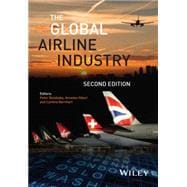Extensively revised and updated edition of the bestselling textbook, provides an overview of recent global airline industry evolution and future challenges
- Examines the perspectives of the many stakeholders in the global airline industry, including airlines, airports, air traffic services, governments, labor unions, in addition to passengers
- Describes how these different players have contributed to the evolution of competition in the global airline industry, and the implications for its future evolution
- Includes many facets of the airline industry not covered elsewhere in any single book, for example, safety and security, labor relations and environmental impacts of aviation
- Highlights recent developments such as changing airline business models, growth of emerging airlines, plans for modernizing air traffic management, and opportunities offered by new information technologies for ticket distribution
- Provides detailed data on airline performance and economics updated through 2013








